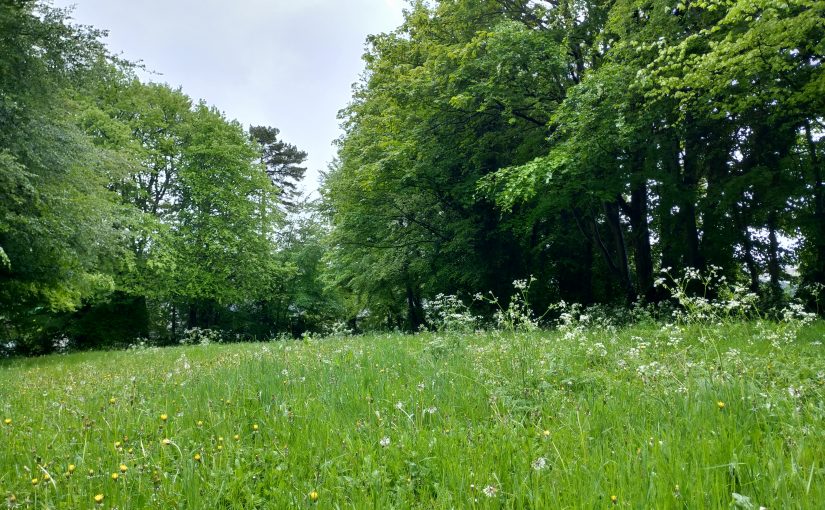In the 1790s, Edward Bunting made a transcription of the tune of Cad é sin, live from the playing of the traditional Irish harper Denis O’Hampsey.
In this blog post we will briefly go through what we know about this live transcription notation and what it might tell us about traditional Irish harp performance style.
The live transcription notation
Bunting has written our tune on the first two staves of a page in one of his little 1790s collecting pamphlets. The page is now bound up into a composite volume and is Queen’s University Belfast, Special Collections, MS4.29 page 51/47/056/f23r.
The bottom half of the page is taken up by the song words “Aim Bagus umbo” which seem to go with the tune of Burns’s March. I think Bunting has written these song words from Denis O’Hampsey’s dictation. I don’t think they have any connection to our tune, and were likely written at a different time into an empty space at the bottom of the page.
Bunting’s title for our tune is “Go Deashin den tea shin vogh vallin shin Do / What is that to them that has nothing to say / too it”

I think you can see clearly that this notation seems to have started out as just the bare “dots”, written by Bunting live at speed as O’Hampsey played. He has expended the dots out by adding note stems, beams and barlines, and he has used a rest to show the rhythm in a couple of places. He has made a big error in bar 5 and has blotted out a run of notes.
Bunting’s piano developments
Bunting made a classical piano arrangement of our tune, apparently based on this live transcription notation. The piano arrangement was done in 1798 and is in his unpublished Ancient and Modern piano manuscript (Queen’s University Belfast, Special Collections, MS4.33.2 p.55(a) (there are two sequential pages numbered 55).
The tune in the piano arrangement is very close to the live transcription. Bunting writes out the first section twice fully. He also provides his own classical piano accompaniment. His title is “What is that to them that has not any thing to say to it / Go de sin don te sin nogh manhin shin doagh” and at the bottom of the page he has written “From Dennis a Hempson / of Magilligan”.
Bunting also published a version of this tune in his 1840 Ancient Music of Ireland. Our tune is not in the main music secion of the collection, but is given as an example on page 15 of the introduction. His title there is “go de sin den te sin / what is that to him”. Bunting has also written “Fourth and seventh omitted” and the tune has a strictly pentatonic shape with all of the fourths and sevenths stripped out. He also provides a very classical harmonisation of the tune.
Attribution to a tradition-bearer informant
I think there are two reasons why we can be fairly confident that the MS4.29 p51 transcription was taken down from the playing of Denis O’Hampsey. One is the attribution in the 1798 piano manuscript, written in within a few years of the 1792 and 1796 collecting trips. The second is its position within the composite manuscript; if you check my Old Irish Harp Transcriptions Project Spreadsheet you can see that it is in the middle of a group of tunes all with O’Hampsey attributions.
Other versions of the song
There is a traditional song with the refrain “cad é sin don té sin nach mbainean sin do”, perhaps best known from Clannad’s version. But I think the tune is very different from ours and may be related to English ballad tunes. There is a set of words in Enrí Ó Muirgheasa, Dhá chéad de ceoltaibh Uladh p.239 and tune on p.453 but I haven’t seen these.
Many thanks to Queen’s University Belfast Special Collections for the digitised pages from MS4 (the Bunting Collection), and for letting me use them here.
Many thanks to the Arts Council of Northern Ireland for helping to provide the equipment used for these posts, and also for supporting the writing of these blog posts.


Thank you once again, Simon. You breathe life back into the old works, much appreciated.
God bless you and yours.